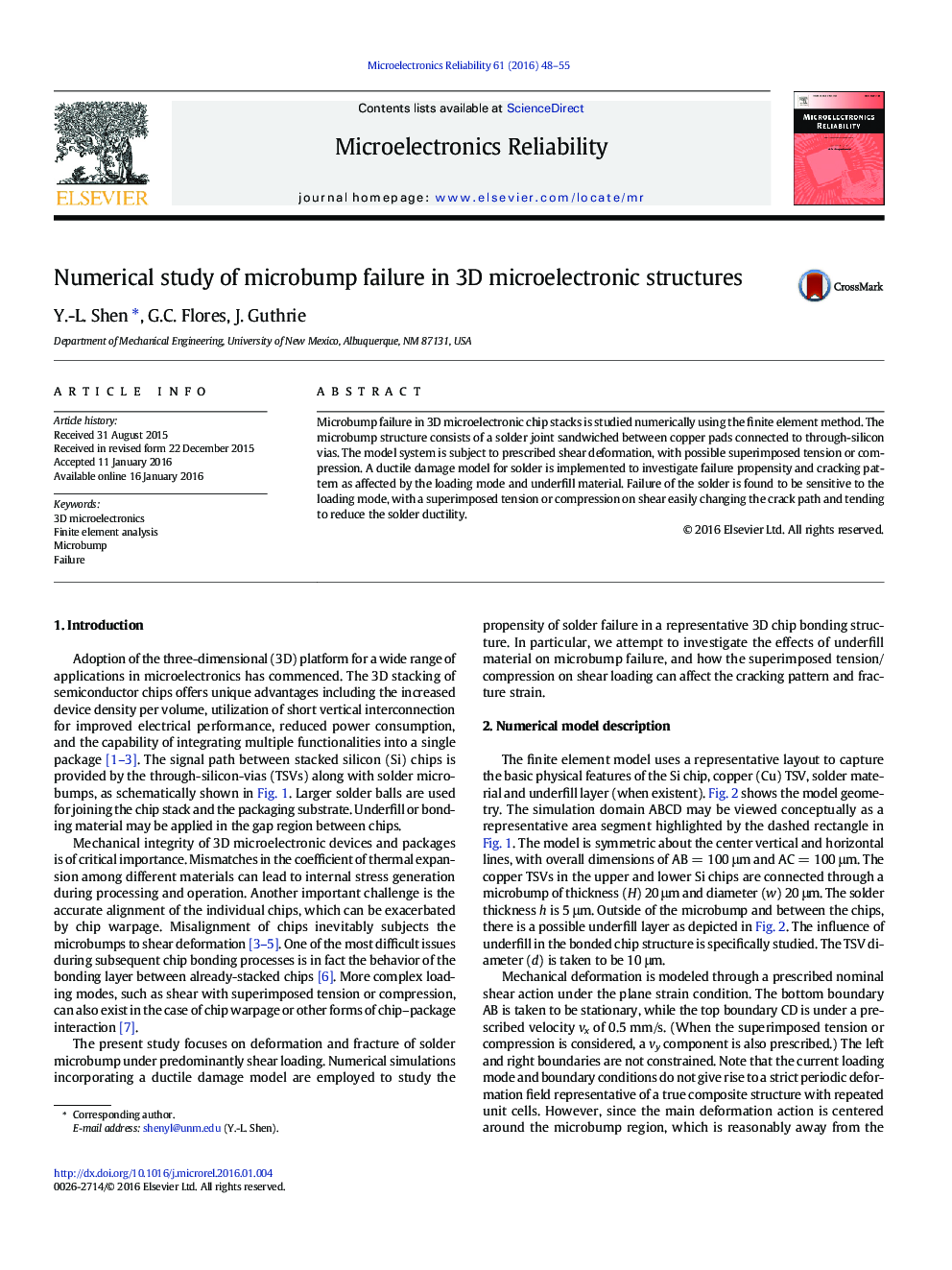| Article ID | Journal | Published Year | Pages | File Type |
|---|---|---|---|---|
| 544610 | Microelectronics Reliability | 2016 | 8 Pages |
•Microbump failure under shear loading was studied using finite element modeling.•Underfill between stacked chips was found to delay solder failure.•Ductility and failure path are sensitive to superimposed tension/compression.
Microbump failure in 3D microelectronic chip stacks is studied numerically using the finite element method. The microbump structure consists of a solder joint sandwiched between copper pads connected to through-silicon vias. The model system is subject to prescribed shear deformation, with possible superimposed tension or compression. A ductile damage model for solder is implemented to investigate failure propensity and cracking pattern as affected by the loading mode and underfill material. Failure of the solder is found to be sensitive to the loading mode, with a superimposed tension or compression on shear easily changing the crack path and tending to reduce the solder ductility.
